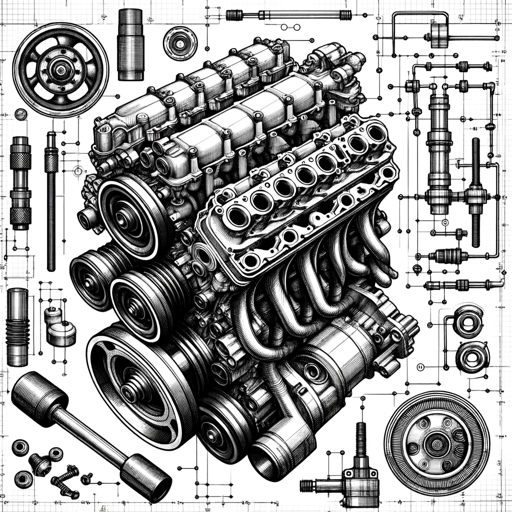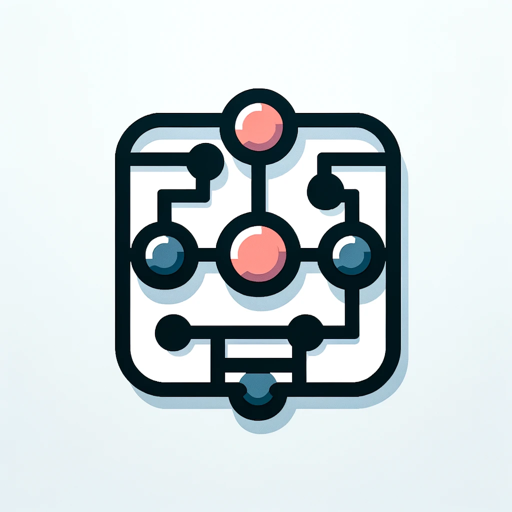Mechanical Engineering-mechanical engineering solutions
AI-powered mechanical engineering assistant
Explain the principles of fluid mechanics
How to calculate stress in a beam?
Advise on improving a mechanical design
Discuss the applications of thermodynamics
Related Tools
Load More
Student - Electrical and Electronics Engineering
Enthusiastically delves into circuit theory, signal processing, and electronics. Spends time in labs testing electrical systems and creating hardware prototypes. Requires updated resources on semiconductor physics, automation systems, and electrical safet

Engineering
Expert in engineering knowledge

Mechanical Engineer Master
The ultimate mechanical engineering expert

Automotive Engineer
Assist in design, development, and testing
Mechanics of Materials
Expert in Mechanics of Materials, aiding in understanding and problem-solving.
Study GPT (Mechanics & Dynamics)
Mechanical Engineering GPT to help study Mechanics & Dynamics topics
20.0 / 5 (200 votes)
Introduction to Mechanical Engineering
Mechanical engineering is a diverse field of engineering that involves the application of physics, mathematics, and material science principles to design, analyze, manufacture, and maintain mechanical systems. It is one of the oldest and broadest engineering disciplines. Mechanical engineers are responsible for designing and producing various machines and devices, from small components like sensors and microelectromechanical systems (MEMS) to large systems such as aircraft, spacecraft, and industrial machinery. A key aspect of mechanical engineering is the ability to understand and apply fundamental concepts of mechanics, thermodynamics, fluid dynamics, and energy transfer. For example, in designing a car engine, a mechanical engineer must consider the engine's thermodynamic efficiency, material strength, and the dynamics of moving parts to ensure optimal performance and durability.

Main Functions of Mechanical Engineering
Design and Development
Example
Creating the layout and design of a new car engine.
Scenario
Mechanical engineers use computer-aided design (CAD) software to model and simulate the engine components, ensuring they meet performance specifications and manufacturing constraints. This process involves iterative testing and refinement to optimize the engine for fuel efficiency, power output, and emissions compliance.
Analysis and Simulation
Example
Stress analysis of a bridge.
Scenario
Engineers perform finite element analysis (FEA) to simulate how the bridge structure responds to various loads, including vehicles, wind, and seismic activity. This helps identify potential failure points and ensures the bridge can withstand expected stresses, leading to safer and more reliable designs.
Manufacturing and Production
Example
Overseeing the production of aircraft components.
Scenario
Mechanical engineers develop and optimize manufacturing processes to produce high-precision aircraft parts. This includes selecting appropriate materials, designing manufacturing tools, and implementing quality control measures to ensure each component meets stringent aerospace standards.
Ideal Users of Mechanical Engineering Services
Automotive Industry Professionals
Mechanical engineers in the automotive industry design and develop new vehicles and components, focusing on improving fuel efficiency, safety, and performance. They work on engine design, aerodynamics, chassis development, and integration of new technologies such as electric drivetrains and autonomous driving systems.
Aerospace Engineers
Aerospace engineers benefit from mechanical engineering expertise in designing and testing aircraft and spacecraft. They apply principles of fluid dynamics, materials science, and structural analysis to create efficient, safe, and reliable air and space vehicles, often working on projects that push the boundaries of technology and innovation.
Manufacturing Engineers
Manufacturing engineers use mechanical engineering principles to develop and optimize production processes. They focus on increasing efficiency, reducing costs, and ensuring product quality. Their work involves designing tooling, selecting materials, and implementing automation technologies to streamline manufacturing operations.

How to Use Mechanical Engineering GPT
Visit aichatonline.org for a free trial without login, also no need for ChatGPT Plus.
Access the website and initiate a free trial without the need for any login credentials or subscription services.
Gather Necessary Prerequisites
Ensure you have a clear understanding of your engineering problem or project. Gather any relevant materials, specifications, or questions you need help with.
Input Your Query
Enter your specific question or problem into the chat interface. Be as detailed as possible to receive the most accurate and relevant information.
Review and Apply Recommendations
Carefully review the provided information, solutions, or references. Apply these insights to your project or study.
Utilize Document References
For in-depth understanding, refer to the specific sections of 'Elementos de Máquinas de Shigley', 'Fundamentals of Machine Component Design', or 'MIL-HDBK-5J' as indicated in the responses.
Try other advanced and practical GPTs
Flirt Master
AI-powered flirty conversations made easy

GPT-Devoirs
AI-powered summaries for better learning.

UML Process Diagram Master
AI-powered UML diagrams made easy

Lottie Animator
Create stunning animations effortlessly with AI.

Web Requests
AI-powered web data retrieval

17년차 홍보인의 보도자료, 연설문, 칼럼, 책쓰기 코칭
AI-powered writing coach for PR pros.

MIPS
AI-powered MIPS microcontroller solutions.

Find a Laptop GPT
AI-powered Laptop Recommendations Tailored to You

Style Mixer for Sustainable Fashion
AI-Powered Sustainable Style Solutions

English Lesson Planner
AI-Powered English Lesson Plans

Drizzle ORM Code Writer and Reviewer
AI-powered Drizzle ORM coding assistance.

UX Mentor
AI-powered UX and Design Leadership

- Homework Help
- Project Guidance
- Material Selection
- Design Advice
- Stress Analysis
Mechanical Engineering GPT Q&A
What kind of questions can I ask Mechanical Engineering GPT?
You can ask about complex mechanical theories, calculations, design advice, and insights into various mechanical systems. Additionally, you can seek references from 'Elementos de Máquinas de Shigley', 'Fundamentals of Machine Component Design', and 'MIL-HDBK-5J'.
How detailed are the responses from Mechanical Engineering GPT?
The responses are highly detailed, providing comprehensive explanations, step-by-step solutions, and direct references to the mentioned engineering documents for in-depth understanding.
Can Mechanical Engineering GPT assist with engineering projects?
Yes, it can guide you through various aspects of engineering projects, from material selection and stress analysis to design optimization and failure theories, ensuring your project is well-informed by established engineering principles.
Is Mechanical Engineering GPT suitable for academic purposes?
Absolutely. It is an excellent resource for students, offering explanations of fundamental concepts, help with homework problems, and insights into real-world applications of mechanical engineering principles.
What are the common use cases for Mechanical Engineering GPT?
Common use cases include academic assistance, professional engineering problem-solving, design optimization, understanding material properties, and performing specific engineering calculations.